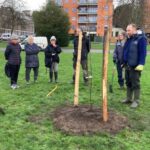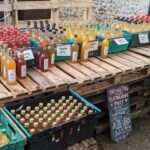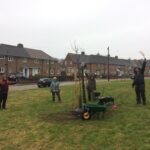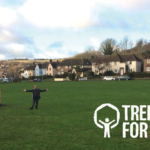Subscribe * indicates required Email Address * First Name Last Name Post code * Please note This will subscribe you to our Community orchards email newsletter which goes out 3 or 4 times a year. You can cancel your subscription at any time by clicking on one of the unsubscribe links that appear at the…
More information ...Orchards and Fruit
We begin 2022 with the best resolution: plant more trees!
With over 130 trees going in this winter, we are just about to take on our busiest tree planting season ever.
More information ...Juice and cider
Apple juice, cider and other products from our Scrumping Project are for sale at our weekend stall at the Fruit Factory in Stanmer Park.
More information ...North Brighton Orchards planting of 70 trees is completed!
We’ve been quietly planting trees every week since the beginning of the year at 9 different
locations across north Brighton…
Update on our North Brighton Community Orchard Project
Great news! We’ve started planting trees at The Avenue site in Bevendean. The first 3 trees are now in place: Sussex Mother, Egremont Russet and Alfriston. We’ll be planting a further 11 Sussex apple variety trees and 6 walnut trees adding 20 trees to the existing 13-tree orchard planted in 2019.
More information ...


